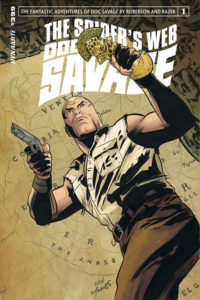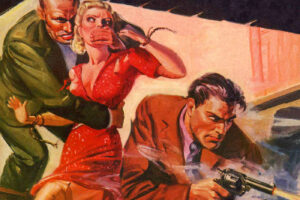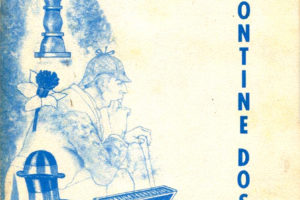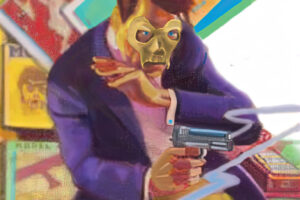 Dynamite published its second Doc Savage mini-series, the five-issue The Spider’s Web. It was also written by Chris Roberson and is set after the first one.
Dynamite published its second Doc Savage mini-series, the five-issue The Spider’s Web. It was also written by Chris Roberson and is set after the first one.
Unlike the first series, this one has a more consistent storyline through the series, though almost each issue has a flashback scene to an earlier case, as Doc and associates discover that their current case is tied to several in the past.
The storyline launches with the first issue when Doc and his organization helps with an earthquake. They soon figure out that it was man-made, caused by technology Doc had encountered back in the 1930s. A flashback shows Doc and his crew in 1933 dealing with that tech, and Doc tracking it to down to a rich industrialist, who accidentally kills himself attempting to do in Doc.
The second issue has them continue their investigation, when they discover that gold from Hildago is being used in the components of the devices used. We then get a flashback to 1955 when a group called Arachne invaded the Valley of the Vanished, which was only hinted at in the previous series. Here Doc is able to round up four of the five main leaders of the group. The one who got away and what happened to him was shown in the previous series (the destruction of siliphim and Orion Station). Newer aides Dex and Wool, who would be killed at Orion Station, are part of the flashback.
We learn in the third issue that Doc’s “college” is still shutdown, though it looks more rundown then I think it should. Here they delve into a case from 1974 of an Arachne cult where it appears the members were brainwashed using a method similar to Doc’s methods used at the “college.” Newer aides Watts, Rocky, and Torchy are shown in the flashback. Again, we met them in the first series.
The fourth issue has the next connection tied to a cyber-terrorist case from 1995. Here newer aides Axum and Happy are seen, along with Longshot as a child. This case gives them their first real link to what is going on.
And it’s all wrapped up in the fifth issue. Turns out the villain is a sort of “evil Stephen Hawking,” crippled by amyotrophic lateral sclerosis (ALS), and the true head of Arachne, which is still operating. He has been using a methodology similar to Doc’s college to ensure the loyalty of his underlings. Sadly, the motivation of the villain is the old “my daddy killed himself trying to kill the hero, so I blame the hero and want revenge.”
The overall storyline here is much stronger than in the first series. But we don’t really get to know all these new aides. I’d almost prefer a storyline set in particular time period so we can do that.
There are some issues I had with the art and storyline. So in regards to storyline, Pat is more involved with Doc’s group, different from the pulps. This was something introduced in the first series. In the second issue, Monja shows up to get Doc’s help during the invasion of the Valley, but there should have been a greater sense of urgency than a sort of “hey, just dropping by” that seems to be conveyed. And Doc heavily uses guns in the series, especially in the later periods than happened in the pulps.
Art-wise there also were issues. In the first part of the first issue, Doc’s hair looks like a “James Bama hair” helmet, before being shown as a more logical combed back hair. In the earlier segments, Pat’s hair looks more brown than matching Doc’s bronze, which it should. Several of his original aides aren’t quite right in the first issue. Long Tom looks too much like Doc, Johnny is wearing glasses, and Renny isn’t very distinct. And I never cared for Ham having a mustache.
But I think it’s a step in the right direction. I don’t know if we will see additional series. Seems like all the pulp series at Dynamite have wrapped up at this point. We only have the current Shadow mini going on. Time will tell. Dynamite has already announced a collection of the whole series.



